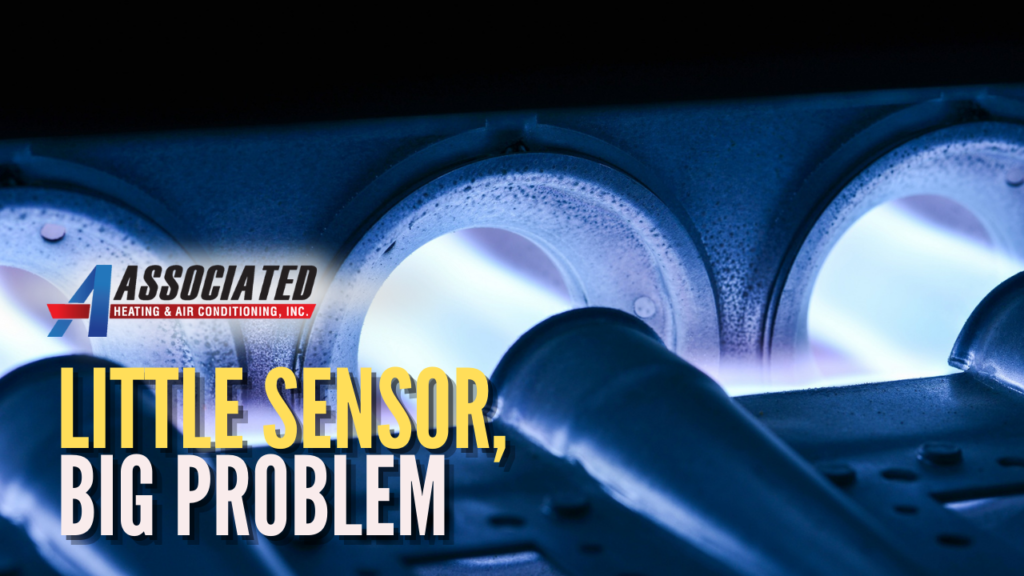
Furnaces have a lot of working parts that can run into issues, but sometimes, your furnace shuts down completely—and it’s not the heat exchanger, it’s not the blower motor. Sometimes it’s a small sensor that prevents your furnace from running even if it’s in perfect working order.
This little component is called a flame sensor, and it runs into a problem we see often when we service gas furnaces in Eugene, OR. Your flame sensor gets dirty over time, and enacts a failsafe for the safety of you and your family. Here’s what you need to know about it.
Here’s What Your Flame Sensor Does
As you might imagine, this sensor detects whether or not there’s a flame. That flame burns gas that comes from your gas line, and allows the furnace to run. But if there’s no flame, the gas line stays open, and spills into your air supply. This results in poor air quality, but it also means you have a huge fire hazard on your hands.
The sensor either detects the flame and allows the flow of gas to continue, or it doesn’t detect the flame, and then shuts the gas line. That way, there’s no gas leaking into your air. The problem is, since newer furnaces don’t have a pilot light that’s constantly going, you can’t look to see if it’s on and immediately know if the problem resides with the flame sensor.
Why It Gets Dirty Over Time
Soot and debris simply builds up over time, and blocks the section of your flame sensor that directly knows whether or not there’s a live flame. So, to the sensor, even if there’s a successful ignition it just can’t detect it. It’s like closing the blinds and wondering why no light is getting through.
It’s not as simple as wiping away soot from your flame sensor, either. It cakes on and hardens over time, so it needs to be cleaned in a detailed manner. That’s where hiring professionals comes in.
The Cleaning Process is Very Involved
While the component is small, it has multiple working parts. The furnace needs to be safely shut down, the gas line needs to be closed. Then it needs to be detached, disassembled, cleaned, reassembled, reattached, and tested.
That’s a lot of steps, which means there’s more opportunity for something to go wrong. That’s why this is one of those home heating jobs that just isn’t possible to do yourself. Technicians are trained in keeping your home and family safe—they have the tools and knowledge to make sure this service goes off without a hitch.
Your Flame Sensor Isn’t a DIY Job
While it would be nice to shut down your furnace, clean your flame sensor, dust off your palms and say “Problem solved,” it’s not that simple. There’s a lot of nuance to disconnecting, disassembling, and reassembling your flame sensor, which is why it needs to be handled by professionals. Contact us today to schedule your gas furnace repair. Whether it’s the flame sensor or not, we’ll figure it out and get it fixed.
Contact us today to schedule your gas furnace repairs as soon as possible.
